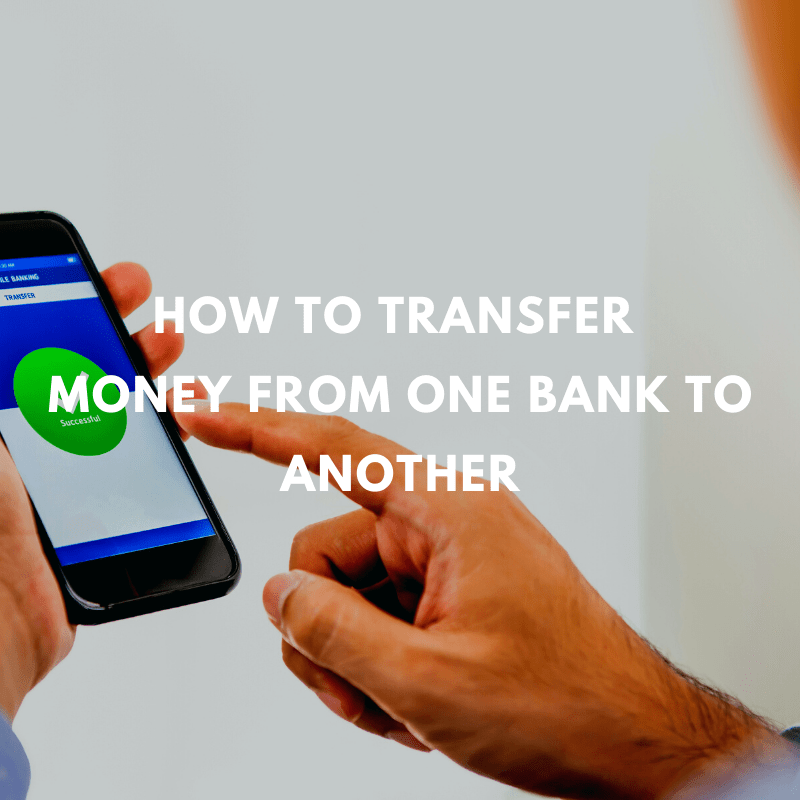Wondering how much does a $10,000 CD make in a year? Well, if you’re fortunate enough to have $10,000 you can set aside for one year, a certificate of deposit (CD) can deliver an attractive return.
CD rates are yielding extremely high rates right now. For example, Connexus Credit Union is offering a 4.76% APY return for one-year CDs. At the end of a year, you would see a return of $561.
How Much Could a $10,000 CD Make in a Year?
As of April 2024, these are the average returns you can get in one year for a $10K CD.
| Type of 1-Year CD | APY | Interest on $10K After 1 Year | Total CD Value After 1 Year |
| Competitive Rate | 5.50% | $550 | $10,550 |
| Nationwide Average Rate | 1.76% | $176 | $10,176 |
| Average CD Rate | 0.03% | $3 | $10,003 |
Average CD Rates
CD rates are ultra-high right now. As of October 2023, the national average interest rate of a twelve-month CD is 1.76%. The average five-year CD interest rate, by contrast, is 1.38%.
Rates are based on the CD term length, as well as the brokerage firm, bank, or credit union that issues the CD. The size of the CD may also determine interest rates.
Jumbo CDs, which may require a minimum deposit as high as $100K, can offer a much higher return than regular CDs. The current average national rate for jumbo CDs is 1.44%.
CD Rates from Brick and Mortar Banks
While national CD rates are at all-time highs, this is due to rate surges at online-only banks. Most traditional, brick-and-mortar banks still have the same low yield rates.
Online banks have an average 5.10% rate for one-year CDs, nearly 3x higher than the national average of 1.76%.
As an example, U.S. Bank offers a one-year CD rate of just 0.05%. Chase Bank, the nation’s largest bank, offers an abysmal 0.02% rate for a one-year CD. This means you’d make $2.00 for buying a $10,000 CD and not touching it for a year.
Some brick-and-mortar banks and credit unions do have attractive rates though. Connexus Credit Union is offering a 4.76% APY return for one-year CDs. At the end of a year, you would see a return of $561.
Current Interest Rates on 1-Year CDs
For a high-yield CD, a $10,000 CD could make more than $500 in one year by utilizing one of the best cd rates offered today.
Here are the best rates currently offered:
| Bank | Term | APY | Min Deposit |
|---|---|---|---|
| Western Alliance Bank | 12 Mo | 5.51% APY | $1 |
| NBKC Bank | 11 Mo | 5.50% APY | $0 |
| Bread Financial | 12 Mo | 5.35% APY | $1,500 |
| BrioDirect | 12 Mo | 5.35% APY | $0 |
| First Internet Bank | 12 Mo | 5.31% APY | $1,000 |
| Navy Federal Credit Union | 12 Mo | 5.30% APY | $50 |
| America First Credit Union | 12 Mo | 5.30% APY | $500 |
| CFG Community Bank | 12 Mo | 5.25% APY | $500 |
| UFirst Credit Union | 12 Mo | 5.25% APY | $10 |
| UFirst Credit Union | 12 Mo | 5.25% APY | $500 |
How 1-Year CDs Work
When you open a $10K CD at any financial institution, you are making a pledge to keep your funds in there for the duration of the CD’s term, or for 12 months for the CDs in the table above.
Commonly, there is an early withdrawal penalty which is usually a portion of the interest earned on your balance. In some instances, you could forfeit all interest earned.
You can find no-penalty CDs too, where there’s no penalty for taking out the funds early. Generally, these are CDs with shorter terms and less attractive APYs.
But if you have the extra cash and a specific goal on a measurable, one-year horizon, then a 12-month CD could be a good fit. And you aren’t limited to just investing $10K. You can tuck away additional funds and get a higher return.
In comparing 12-month CDs with a 5.50% APY, here are some different scenarios for what CDs of different amounts could make.
| Amount of One-Year-CD | Interest Earned at 5.50% APY | Total CD Value After 1 Year |
| $5,000 | $275 | $5,275 |
| $10,000 | $550 | $10,550 |
| $15,000 | $825 | $15,825 |
| $20,000 | $1,100 | $21,100 |
| $25,000 | $1,375 | $26,375 |
| $30,000 | $1,650 | $31,650 |
| $35,000 | $1,925 | $36,925 |
| $35,000 | $1,925 | $36,925 |
| $40,000 | $2,200 | $42,200 |
| $45,000 | $2,475 | $47,475 |
| $50,000 | $2,750 | $52,750 |
| $75,000 | $4,125 | $79,125 |
| $100,000 | $5,500 | $105,500 |
Alternatives to CDs
While CDs can be a great vehicle for significant, short-term growth, they aren’t the only instrument to grow your savings for the short term. Here are some other alternatives for you to consider.
Money Market Accounts (MMAs)
A money market account has been described as a cross between a higher-yield savings account and a checking account.
You can write checks from an MMA, use an attached debit card, and make withdrawals and deposits via ATM. Like a savings account, there is often a limit to how many withdrawals you can make each month.
You’ll earn more interest on a higher balance that is kept in the account for a longer period of time, but there’s no obligation to keep funds in there for 12 months or other term limits like with a CD.
A money market account gives you readier access to cash and there are no early withdrawal periods to worry about.
High-Yield Savings Accounts (HYSAs)
A high-yield savings account functions like a traditional savings account at your bank or credit union. It’s a deposit account where you save money for a rainy day. The financial institution keeps your cash safe and will pay you interest on your balance.
A high-yield savings account (HYSA) offers a much better interest rate than a traditional savings account. According to the Federal Deposit Insurance Corporation (FDIC), the national average savings account APY is 0.45%, but at the average HYSA, consumers can get an APY of 4.5% to 5.25%.
As with regular or high-yield savings accounts, there is commonly no minimum balance requirement. Many banks and credit unions will, however, limit you to no more than six withdrawals per month from your savings account — including transfers from your savings to other bank accounts.
While the FDIC lifted this six-per-month restriction in 2020, many banks opted to still keep this rule in place.
¹Annual Percentage Yield (APY) is accurate as of 1/17/2024 and subject to change at the Bank’s discretion. The minimum deposit required to open an account is $500 and a minimum balance of $0.01 is required to earn the advertised APY.How to Choose Between a CD or Another Savings Vehicle
Knowing whether to pick a certificate of deposit or savings account isn’t always easy, but it comes down to what your specific savings goals are.
If you are saving money for a specific goal at a specific date in the future — like enough cash for a down payment on a house in two years — then a 24-month CD could make a lot of sense. It will help you grow your savings and remove the temptation to spend any dedicated funds.
But if you need more flexibility to access funds, in case of a financial emergency, then going with a money market account or high-yield savings account could be the way to go.
Before you opt for a long-term CD, it’s a good idea to start with a shorter-term CD first. This will give you firsthand experience with putting your money off-limits for a defined period of time. You can get a short-term CD for 9 months, 6 months, or even 3 months.
Frequently Asked Questions
Is a 6-Month CD Worth It?
Possibly. If you have a short-term savings goal, like paying taxes in six months or a down payment on a car, then a 6-month CD could make sense.
It will take the cash out of play, and remove any temptation to spend those funds. But when selecting a 6-month CD, consider the interest rates, any fees, opening deposit requirements, and any penalties for early withdrawal.
If you do open a 6-month CD, make sure to not lock up all your cash for the time period. Keep some funds on hand in case of any emergency.
Can I Get Monthly Income from a CD?
Most certificates of deposit will earn interest daily or monthly, but some pay interest quarterly or yearly. It depends on the compounding frequency of your CD.
And while you can generate income in the sense that it’s money earned on a regular basis through an investment, you probably can’t earn enough income to live off of.
A $100K CD with a high 5.50% APY, for example, would generate $5,500 a year. This amount of interest is a nice sum but not a quit-your-job kind of money.
Can You Lose Money on a 1-Year CD?
For most consumers, you can’t lose money on a 1-year certificate of deposit. This is because a CD account is generally purchased at a bank or a credit union, there’s a guaranteed return, and the funds are safely held until their maturity date.
Deposits at a bank or credit union, up to $250K, are protected through insurance by the FDIC or NCUA. For this reason, CDs are considered very low-risk.
However, you could lose money on a bank CD if you were to withdraw funds before their maturity date or the end of the CD’s terms. When opening a CD, be sure to review any early withdrawal penalties. This is why a no-penalty, NCUA, or FDIC insured, may be your safest option.
You could also lose money through potential lost earnings in other investments. CD rates are fixed for a set period of time. If you open up a 5.25% APY CD for one year, but money market account (MMA) rates go up to 5.75%, you could be missing out.
You can minimize this risk by laddering several types of CDs that will mature at different timeframes. A CD ladder ensures you can take advantage of any rising interest rates and also have regular access to cash funds.
How Much Does a $10,000 CD Make in 5 Years?
While many 1-year CDs pay a 5.50% APY, you can find competitive 5-year CDs paying an annual percentage yield of 4.5% interest or higher.
So if you purchased a 5-year CD for $10,000 with a 4.5% APY, it would be worth $12,462 after five years. Through annual interest, your $10,000 would earn $2,462 in 5 years with compound interest.
Bottom Line
A $10,000 CD could make over $500 in a year, depending on the APY of the CD you choose to go with. But the funds will be locked up for a year. This means you may still need a separate rainy day fund in case of an emergency because if you take out funds early from a CD you could lose money from early withdrawal penalties.
Examine your spending habits, savings goals, and other sources of emergency fund cash before selecting a CD, money market account, high-yield savings account, or other savings vehicles.






Comments are closed.
Comments are closed here.